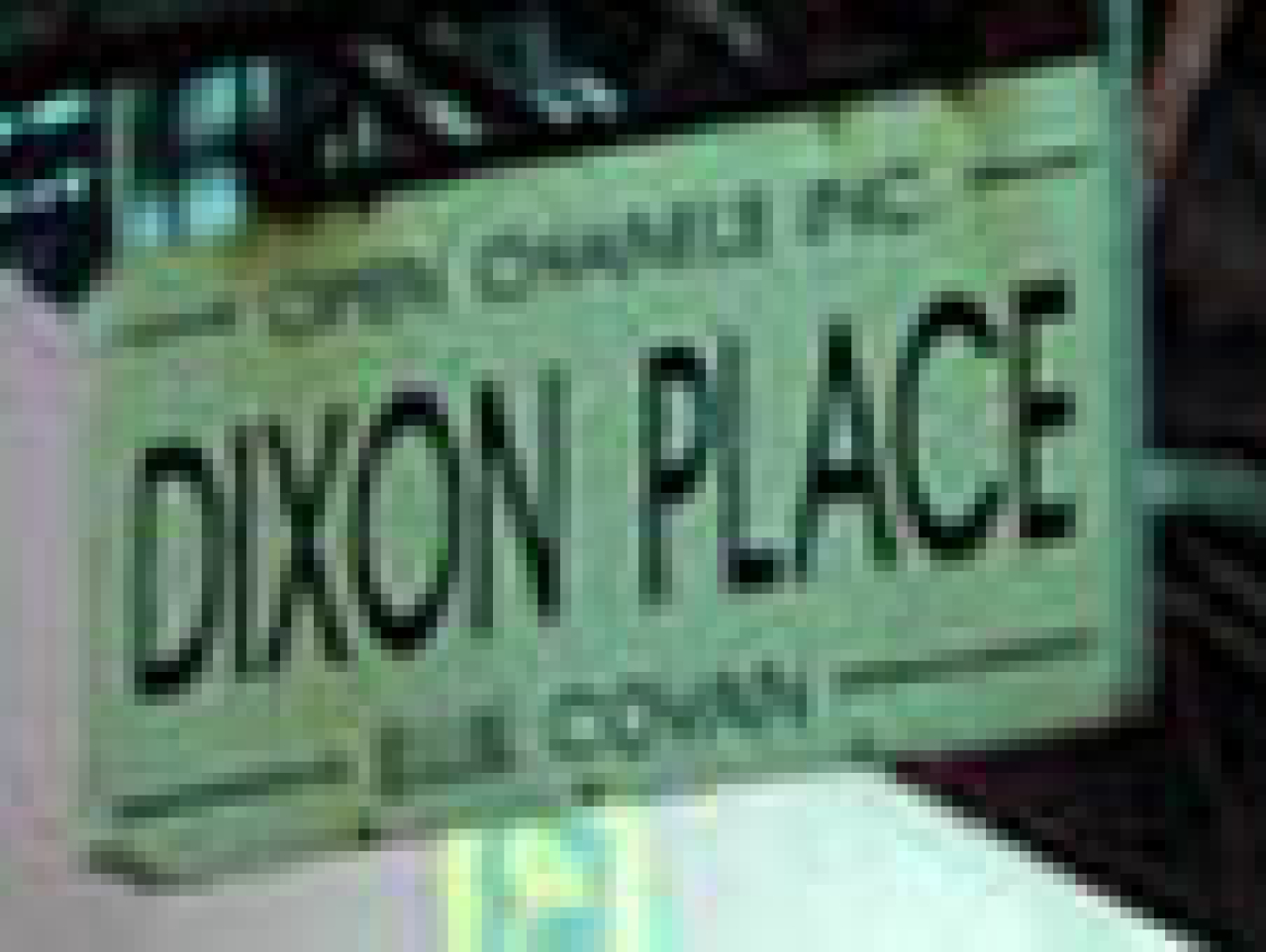Violence as Storytelling

Ruth Margraff had an experience with violence several years ago that illuminated what violence meant. “I got beat up by some kids,” she recalls, “and as the blow was coming at me, I thought, ‘oh, this is clear, this is what clarity means.’ They wanted my purse. They wanted me to give up some kind of surplus that I had. It’s kind of like a brawl,” she continues. “Someone had an advantage and someone does not. Like a democracy.” But are the results democratic? “Oh, no, no, that’s the problem,” she laughs. “It creates even more injustice.”
Brawling and its results are the subject of Margraff’s latest play, The Centaur Battle of San Jacinto: An Extended Barroom Brawl, directed by Donna Linderman, which will be opening at Dixon Place in May. Margraff and Linderman have been working on the play, originally a commission from the Salvage Vanguard Theatre in Austin, for the past few years, workshopping it at Brooklyn College and La MaMa. The result is a production, with original music, that both writer and director are extremely excited about.
“I’d read every single script [in a new play development project] and Ruth’s was last,” Linderman recollects. “It knocked my socks off. I was beside myself. I called up the person I was working with and said, ‘This is the one.’ The language is just so alive, poetic, funny, aggressive. It leapt off the page at me.”
Centaur Battle deals with the true-life story of the Battle of San Jacinto–a revenge for the Alamo. The Americans slaughtered the Mexicans in revenge for killing Golden Boy Davy Crocket and–in a turn of events unbeknownst to most Americans (besides a few Texans)–one-third of the land in the United States changed hands. Mythic frontier figures such as Santa Anna, Sam Houston, and the Yellow Rose of Texas populate the bar in which the play takes place.
Margraff did extensive research on the commissioned subject, which was not unusual for her. “I bastardize a lot,” she confesses, “I was faithful to this, though…It’s hard with a commission because your heart swells up with things that occur to you naturally, and then you [have to] place it into the filter that’s designed for you. But I let myself rebel because that’s honest.”
[[pg]]
Constraints or not, the story of San Jacinto seemed a perfect subject for Margraff, a recent émigré to the Lone Star State. “I fell in love with the rhythm down in Texas,” she says dreamily. “There’s a masculinity that pervades the landscape.” Themes of masculinity in the battle story resonate deeply for Margraff. “I always think of myself as having grown up as a waif, and I always wanted to get rid of the waifdom. My writing is very female, and I wanted to write male characters, and so I got sort of spun into this whole love of Westerns.” Centaur Battle is the latest of several in a string of Western-style plays by Margraff. “In this play, I zeroed in on the barroom brawls. This play is all barroom brawls. I just love watching stage combat.”
Linderman, too, has a philosophical interest in violence and its ramifications. “Whoever’s left standing is the one who gets to tell the story of what went down,” she asserts. “Which, to me, is the whole history of how we write our history in America. [The play] is a microcosm of that.” Rather than taking the easy route of condemning violence, Margraff and Linderman explore it. “The people in the barroom take perverse pleasure out of the violence–they enjoy it on some level,” Linderman says. “So what is the pleasure in beating the shit out of each other? It’s an intense desire for connection, even if it’s through the act of violence. Sometimes people are unable to come together intellectually, or on the level of intimacy, or historically, or politically, and things move into physical violence as a result.”
The notion of exploring, rather than explaining, is crucial to both Margraff’s and Linderman’s work. “I don’t judge my characters, even when I don’t agree with them–and a lot of times I don’t agree with them,” Margraff acknowledges. “I let them go at it athletically.” And Margraff has high praise for this quality in her director. “She’s a gem,” Margraff declares. “She doesn’t impose her aesthetics.”
Linderman is equally admiring of Margraff. “She’s interested in you as a fellow artist and what you got out of her writing, instead of, ‘This is what I wrote and this is what you have to do.’ She’s the most open playwright I have ever dealt with in my life. She’s full of humor and genuine appreciation of how people deal with one another through language, and she brings her openness to every single encounter.” Both artists have their ears to the ground and their minds open to insight and adventure: a formula that promises to create exciting, provocative work.











